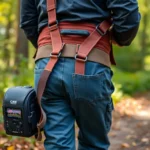
Introduction
Training a dog can be one of the most rewarding experiences for any pet owner, but it can also be quite challenging—especially when dealing with stubborn dogs. These dogs often resist commands, making it difficult for owners to instill desired behaviors. Using the right training tools can significantly impact your success in training. In this article, we will explore the best training collars for stubborn dogs, providing insights into their effectiveness, types, and tips for successful usage.
Understanding Stubborn Dogs
Definition of a Stubborn Dog
A stubborn dog is often defined as a pet that exhibits resistance to commands and training efforts. This resistance can manifest through disobedience, distraction, or a general lack of willingness to engage in training exercises.
Common Behavioral Traits of Stubborn Dogs
Stubborn dogs may show various behavioral traits, including:
- Selective Hearing: They may seem to ignore commands, responding only when it suits them.
- Distraction: Easily sidetracked by their environment.
- Temperament: Often strong-willed and independent.
Reasons Why Some Dogs May Be Harder to Train
Understanding why some dogs are more stubborn than others can help in selecting the most effective training approach. Here are some factors to consider:
- Genetics: Certain breeds are known for their independent nature, making them appear stubborn. Breeds like the Afghan Hound or Bulldog may be more challenging to train than others.
- Environment: Dogs raised in chaotic or inconsistent environments can develop stubborn tendencies due to a lack of structure.
- Past Experiences: Dogs that have had negative experiences with training or harsh methods may become resistant to commands.
The Role of Training Collars
Explanation of What Training Collars Are
Training collars are specialized devices designed to aid in dog training, providing a means of communication between the dog and its owner. They come in various types, each serving different purposes and training philosophies.
Overview of How Training Collars Can Aid in Training Stubborn Dogs
Using a training collar can provide an effective way to capture a stubborn dog’s attention and reinforce commands. They can help in:
- Redirecting Behavior: By providing a gentle correction or cue, training collars can redirect a dog’s focus back to the owner.
- Consistency: Collars can help maintain consistency in commands and corrections, which is vital for training stubborn dogs.
Importance of Choosing the Right Collar for Your Dog’s Needs
Not all dogs are the same, and selecting the right collar that fits your dog’s temperament, size, and training needs is crucial for success.
Types of Training Collars
Prong Collars
Description and How They Work
Prong collars, also known as pinch collars, consist of metal links with prongs that pinch the dog’s neck when pulled. They are designed to mimic the corrective behavior a mother dog would exhibit.
Benefits and Drawbacks
- Benefits: Effective for controlling strong pullers; can provide immediate feedback.
- Drawbacks: Misuse can lead to injury; not suitable for all dogs.
When to Use a Prong Collar
Prong collars are best for dogs that pull excessively on the leash, but they should be used under the guidance of a professional trainer to ensure proper fitting and technique.
Clicker Collars
Description and Functioning
Clicker collars incorporate a small device that emits a click sound when the dog performs a desired behavior. This sound serves as a marker for positive reinforcement.
Benefits for Stubborn Dogs
Clicker collars can be particularly effective for stubborn dogs, as they allow for precise timing in rewards, making it clear to the dog what behavior is being reinforced.
Training Techniques Using Clicker Collars
- Start by teaching the dog a basic command (like “sit”).
- Use the clicker immediately when the dog responds correctly, followed by a treat as a reward.
E-Collars (Electronic Collars)
Description and Technology Behind E-Collars
E-collars, or electronic collars, deliver a mild electric stimulation to the dog’s neck when triggered by the owner. They often come with adjustable settings to customize the level of correction.
Pros and Cons
- Pros: Effective for long-distance training; can be used in distracting environments.
- Cons: Misuse can lead to fear or anxiety; requires careful training.
Situations Where E-Collars Can Be Effective
E-collars are beneficial in scenarios requiring long-distance communication, such as training recall commands in open spaces.
Head Halters
Description and How They Differ from Traditional Collars
Head halters fit around the dog’s muzzle and neck, offering better control over the dog’s head and direction without causing harm.
Benefits for Controlling Stubborn Dogs
Head halters are suitable for dogs that tend to pull or are easily distracted, providing owners with more control during walks.
Tips for Proper Use
- Introduce the halter gradually to avoid resistance.
- Pair the use of the halter with positive reinforcement to encourage acceptance.
Factors to Consider When Choosing a Training Collar
- Dog’s Size and Breed: Ensure the collar is appropriate for your dog’s size and breed to avoid injury.
- Level of Stubbornness and Specific Training Goals: Determine how resistant your dog is and what specific behaviors you want to address.
- Comfort and Fit of the Collar: A properly fitting collar is crucial for safety and effectiveness.
- Safety Features and Humane Considerations: Look for collars that prioritize the dog’s well-being and include safety mechanisms to prevent misuse.
- Recommendations from Trainers and Veterinarians: Consult professionals for personalized advice based on your dog’s unique needs.
Top 5 Best Training Collars for Stubborn Dogs
Collar 1: PetSafe Gentle Leader Headcollar
Key Features
– Designed to prevent pulling
– Comfortable fit with padded noseband
Pros and Cons
– Pros: Promotes gentle control; easy to fit; good for training.
– Cons: Requires time for dogs to get accustomed.
Ideal Use Cases
Best for dogs that pull on the leash frequently and need immediate redirection.
Collar 2: Herm Sprenger Prong Collar
Key Features
– Stainless steel construction
– Adjustable links for a custom fit
Pros and Cons
– Pros: Highly effective for strong pullers; durable material.
– Cons: Can cause discomfort if misused.
Ideal Use Cases
Suitable for large, strong dogs that require more control during walks.
Collar 3: PetSafe Elite Little Dog Remote Trainer
Key Features
– Remote-controlled e-collar
– Up to 15 levels of stimulation
Pros and Cons
– Pros: Versatile training options; effective for stubborn dogs.
– Cons: Requires careful training to avoid misuse.
Ideal Use Cases
Best for off-leash training in open areas, helping with recall commands.
Collar 4: PetSpy P620 Dog Training Collar
Key Features
– 1000ft range
– Beep, vibration, and shock settings
Pros and Cons
– Pros: Versatile training modes; long-distance use.
– Cons: May not be suitable for sensitive dogs.
Ideal Use Cases
Ideal for training in distracting environments, such as parks or busy streets.
Collar 5: Dogtra 1900S Remote Training Collar
Key Features
– Waterproof and submersible
– Rechargeable battery with long life
Pros and Cons
– Pros: High-quality build; effective for stubborn dogs.
– Cons: Higher price point.
Ideal Use Cases
Best for professional trainers or serious dog owners looking for an effective training tool.
Training Techniques Using Collars
Basic Commands
How to Start Training with Collars for Basic Commands
- Choose a quiet area with minimal distractions.
- Attach the collar and allow your dog to get used to it.
- Use a command like “sit” and provide a gentle correction if needed.
- Immediately reward your dog upon correct response.
Dealing with Distractions
Techniques for Using Collars in Distracting Environments
- Start with low-level distractions and gradually increase difficulty.
- Use the collar’s correction feature to regain your dog’s attention when distracted.
Tips for Maintaining Focus
- Limit distractions during initial training sessions.
- Use high-value treats to encourage focus on commands.
Consistency and Positive Reinforcement
Importance of Consistent Training
Consistency is crucial when using a training collar. Always use the same commands and correction techniques to avoid confusing your dog.
Combining Collar Training with Positive Reinforcement Methods
Use treats or praise immediately after a desired behavior to reinforce training. This combination helps create a positive association with commands and the collar.
Common Mistakes to Avoid
- Over-relying on Collars: Training should not solely depend on the collar. Use it as a tool alongside other training methods.
- Incorrect Collar Fitting and Usage: Ensure the collar fits properly to prevent discomfort or injury.
- Failing to Reinforce Training with Positive Methods: Always combine corrections with positive reinforcement to maintain a healthy training environment.
- Ignoring the Dog’s Comfort and Signs of Distress: Pay attention to your dog’s behavior and adjust training methods if signs of discomfort arise.
Conclusion
Choosing the best training collars for stubborn dogs is essential for effective training. By understanding your dog’s unique needs and the various collar options available, you can make informed decisions that lead to successful training outcomes. Remember that patience and consistency are key in shaping your dog’s behavior.
FAQs
What is the most humane training collar?
The most humane training collar typically includes head halters or clicker collars, focusing on positive reinforcement rather than corrections.
How do I know if a collar is right for my dog?
Consider factors such as your dog’s size, breed, and specific training needs. Consulting a professional trainer can also provide guidance.
Are training collars safe for all dog breeds?
Not all collars suit every breed. It’s important to choose collars designed for your dog’s size and temperament.
How long should I use a training collar?
Use the collar as a training tool until the desired behaviors are established, then transition to rewards and verbal commands.
Can I use a collar as a long-term solution?
Training collars should not be a long-term solution; they are meant to aid in training and should be phased out as your dog learns.









